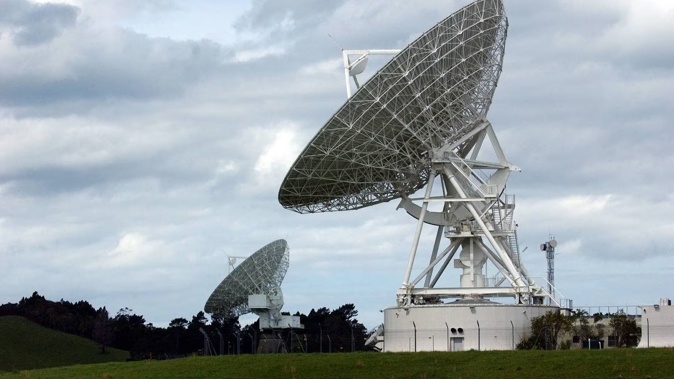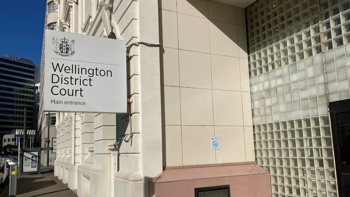
A university’s controversial decision to close our only major radio observatory left top Government officials scrambling when they learned how it could disrupt critical global networks that support GPS.
Documents also show how the Auckland University of Technology (AUT)’s move to shut down its Warkworth Radio Astronomy Observatory (WRAO) last year amid wider job cuts was met with an outcry from scientists from major international institutes - some of whom directly lobbied ministers.
But now, after a round of high-level negotiations, it appears the observatory north of Auckland has been saved, with Southland-based SpaceOps NZ planning to take over within months.
Set apart by its towering radar dishes, the complex was first developed for long-range telecommunications - and once broadcast the 1974 Christchurch-hosted Commonwealth Games - before being re-purposed as an AUT-run observatory for radio astronomy.
Since then, it’s supported a dedicated AUT radio astronomy institute and various space projects, including the historic launch of SpaceX’s Falcon 9 rocket and Dragon spacecraft.
But it was another of the observatory’s key functions - it’s one of the Southern Hemisphere’s few sites that collects data critical for the accuracy of global navigation satellite systems - that proved the centre of worries for Government agencies when they learned of the closure plans.
The observatory is equipped with a Symmetricom Hydrogen maser clock, designed to provide extremely accurate timing as required for very long baseline interferometry (VLBI) used in radio astronomy.
/cloudfront-ap-southeast-2.images.arcpublishing.com/nzme/HCYL7535DI2GDY2HLXXL23SR6E.jpg) Professor Sergei Gulyaev, founder of AUT's Institute of Radio Astronomy and Space Research, pictured with the Warkworth observatory's 30m radio telescope in 2008. Photo / Greg Bowker
Professor Sergei Gulyaev, founder of AUT's Institute of Radio Astronomy and Space Research, pictured with the Warkworth observatory's 30m radio telescope in 2008. Photo / Greg Bowker
As part of a network of Global Geodetic Observing Systems (GGOS), it contributes data to both the international GNSS service, and the International Very Long Baseline Interferometry Service for Geodesy and Astrometry (IVS).
Specifically, the data is sent to international correlation centres to support “reference frames” for updating global position systems, used here by agencies such as Land Information New Zealand (LINZ) and the New Zealand Defence Force.
Documents released under the Official Information Act (OIA) show how AUT’s plans prompted the Nasa-based IVS to sound its “severe concern” to the university’s vice-chancellor, Damon Salesa.
The IVS’ Professor Rudiger Haas said the closure would have a dramatic impact on the measurements provided by the global service.
“This loss cannot be compensated for, probably for years to come, because of a deficiency in observations in the southern hemisphere,” he wrote.
Meanwhile, the GGOS’s Dr Michael Pearlman also told Government officials the observatory was “fundamental” to the International Terrestrial Reference Frame (ITRF).
“The importance of the ITRF cannot be overstated; it is the basis of all of our metric measurements of global change over space, time and technology,” Harvard University-based Pearlman wrote.
These included measuring tectonic motions, mean sea level and changes in the planet’s cryosphere.
Elsewhere among correspondence were concerned emails from top scientists at Japan Aerospace Exploration Agency (Jaxa), the International Academy of Astronautics and Germany’s Max Planck Institute for Radio Astronomy.
One top US astronomer, from the US Smithsonian Astrophysical Observatory, told how the WRAO had been assisting a major project to map the structure of the Milky Way, and it was unlikely it could be completed without it.
Still, it was the impact on geodetic services that appeared to have caused the most alarm among officials across multiple agencies, including the Defence Force and the New Zealand Space Agency, run by the Ministry of Business, Innovation and Enterprise (MBIE).
/cloudfront-ap-southeast-2.images.arcpublishing.com/nzme/NUJRYHL6PNEGHBQERRDDKXBABI.jpg) An email sent by MBIE’s space policy team leader, Dimitri Geidelberg, in August.
An email sent by MBIE’s space policy team leader, Dimitri Geidelberg, in August.
“So the situation is more complicated than we thought,” MBIE’s space policy team leader, Dimitri Geidelberg, wrote in an August email to another MBIE official.
“From our perspective it would be very helpful if we (directly or through the minister) could ask AUT to delay taking a final decision.”
Later that month, officials drafted a memo to Research, Science and Innovation Minister Ayesha Verrall and Economic and Regional Development Minister Stuart Nash, flagging “serious flow-on effects” for global navigation satellite systems if the observatory stopped operating.
The memo showed MBIE had brought together a host of agencies to “co-ordinate Government input into AUT’s decision process”, while officials were trying to find funding solutions fast to stop the immediate closure.
While the university’s commercialisation arm, AUT Ventures, initially put a funding proposal to MBIE, AUT instead then went ahead with a decision in September to close the observatory within months, with the loss of several permanent staff.
At the time, AUT said the observatory’s activities were “no longer aligned with the future direction of the university”.
“It is therefore no longer possible to allocate funds to continue its operation in a cost-constrained funding environment where difficult decisions need to be made,” a spokesperson said.
/cloudfront-ap-southeast-2.images.arcpublishing.com/nzme/3UKTSKW5HZDDXAKWEKBYMSE4NA.jpg) Government officials drafted up a set of "reactive" questions and answers about the situation last year. Image / Supplied
Government officials drafted up a set of "reactive" questions and answers about the situation last year. Image / Supplied
A “change proposal” among the OIA documents shone more light on AUT’s rationale for the closure, which included the fact that New Zealand had missed out on being a host country for the world’s largest radio telescope: the Square Kilometre Array (SKA).
It was the potential to be part of that project which led to a 30-metre dish at the observatory being converted into a radio telescope. In 2020, the Government opted to withdraw New Zealand’s membership in the project altogether.
The change proposal made no mention of what would happen to the geodetic services the observatory provided.
Asked if AUT had considered this critical aspect when it moved to close the facility, a university spokesperson told the Herald it had.
“However, the activities of the observatory were considered non-core and no longer in alignment with the future direction of the university.”
The OIA documents further showed that, while AUT had initially planned to shut the observatory before Christmas, it delayed the closure after discussions with MBIE and LINZ, with two technical staff kept on to maintain the telescopes in the interim.
Now, pending final negotiations, the observatory looks to have a new operator under Southland-based SpaceOps NZ, which already hosts an array of its own antennas.
“All going well, we will be operating the facilities from the end of June,” its chief executive Robin McNeill said.
“SpaceOps NZ is keen for the facilities to continue to support radio astronomy for research and education, amongst other things.”
While McNeill couldn’t comment further, Geidelberg told the Herald there were ongoing discussions with AUT and others around arrangements that would ensure that VLBI measurements continued from New Zealand.
“We cannot provide further detail at this time due to the commercially sensitive nature of these discussions.”
Take your Radio, Podcasts and Music with you









